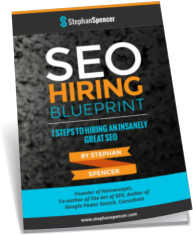Image: Cornelia Durka / Birgit Vogel [CC BY-SA 2.5 ], from Wikimedia Commons
When companies develop their social media strategies, they tend to focus on bigger platforms like Facebook and Instagram.
Pinterest, which has a smaller user base, is often looked at as an optional rather than an essential marketing tool. While the site is not ideal for every business, it is a mistake to dismiss it out of hand for a couple of reasons—especially if you run an ecommerce website.
The first is that 58% of internet users with an income over $100,000 per year use the site.
The second is that 93% of pinners use the site to plan purchases, and 67% of pinners say they’ve found a new brand or product from business content on the site.
When you put these stats together, you begin to get a picture of the average Pinterest user: consumers with a substantial disposable income who use the site to identify new products and trends.
If this sounds like something your business needs to get in on, here are a few tips for incorporating Pinterest into your marketing strategy.
-
Customize Your Profile
If you’re using Pinterest to promote your business, you’ll want to create a verified profile. It’s a little extra effort to go through the process, but after you complete it a blue checkmark will be added to your page.
Once your profile is created, be sure to brand it professionally as you would with any other social profile.
Pinterest is all about boards. Think of your boards as a kind of window display showing off your products. When you start creating your boards, be creative about the topics.
For example, if you run a cupcake business, don’t just create a board called “cupcakes.” Be as specific as you can. Instead, you might create boards like “vegan cupcakes,” “cupcake frosting ideas,” or “kids party cupcakes.” Highlight your best or most popular boards at the top of your profile.
Another thing that you’ll want to do immediately is add “Pin It” buttons to all the products on your site, so Pinterest users can add your content to their own boards.
-
Pin with Abandon
If you’re serious about using Pinterest for business, you really need to make an effort to get involved in the Pinterest community. This means pinning daily—and not just a couple of pins. Go crazy and pin your own content as well as other people’s. The more you pin, the better.
Pinterest users often rely on Group Boards to help them find new content. These are boards that are part of a community and feature posts by many different users.
Adding your content to a group board will expand your reach. You can use sites like Pin Groupie to find Group Boards in your niche.
-
Use Promoted Pins and Rich Pins
Brands pay to use promoted pins to get their posts in front of specific demographics, in a similar way to promoted posts on Facebook or Instagram. There are a number of options for promoted pins, including app downloads for mobile users and one-tap pins that can take the user directly to a landing page.
Rich pins allow you to add extra information to pins, such as the price and availability of certain products. Rich pins draw on meta data from your website, so if you set them up correctly, they will update automatically. Rich pins are perfect for ecommerce sites.
-
Sync with Your Online Store and Create Buyable Pins
It’s now relatively easy to sync Pinterest with many major ecommerce platforms like Shopify, Bigcommerce, and Demandware.
This allows you to create “buyable pins” which are pins that feature a “buy” button in the top right hand corner. When the user clicks on this button, it takes them to a checkout within Pinterest so they never have to leave the site.
The main benefit of using buyable pins is that you get a more seamless buying experience, and hopefully increase your Pinterest conversion rate.
-
Optimize
As with most social media sites, Pinterest works like a search engine, so the more you can optimize your pins and boards, the more traffic and followers (and sales!) you will get.
It may be obvious but Pinterest is a visual site, so you should make your images as appealing and eye grabbing as possible. You’ll also want ensure you optimize your image size. While Pinterest recommends a 2:3 ratio as ideal, experiment and decide what performs best for your audience.
Also, test out different types of content to maximize your repins and click through rate. One study found that “how to” guides and tutorials have a 42% higher CTA than other content.
Optimization is all about diving into your analytics or performing keyword research to find out which topics are popular with your audience, and then creating content and boards around that. As with all online marketing, the more data you have on what your audience wants, the better you will be able to serve them.
For more great tips on social media marketing, check out my interview with Laura Roeder on the Marketing Speak podcast.


 SIGN UP FOR EXCLUSIVE WEEKLY CONTENT
SIGN UP FOR EXCLUSIVE WEEKLY CONTENT 


Leave a Reply